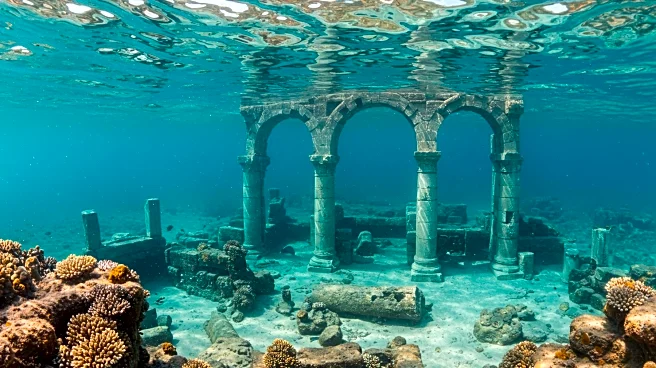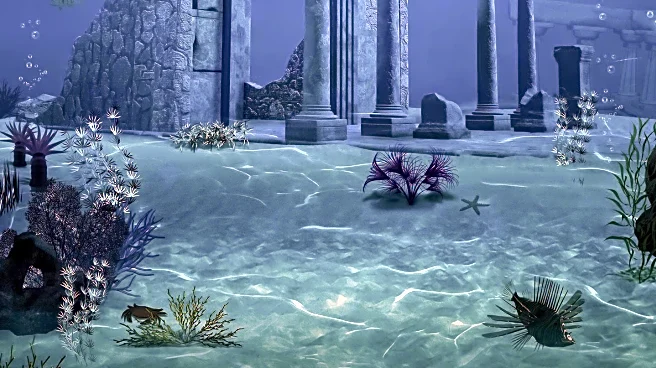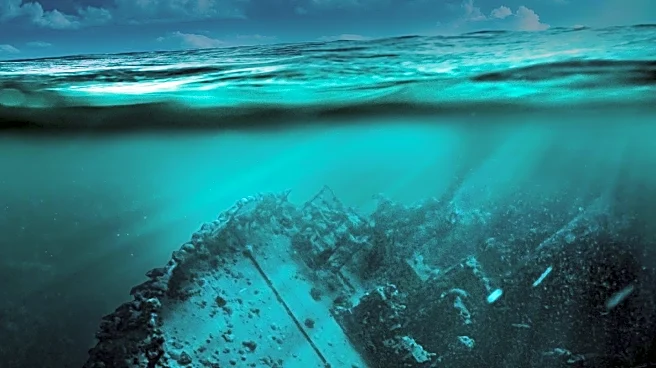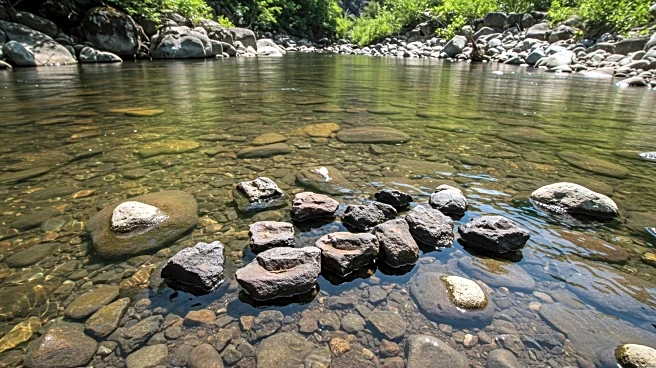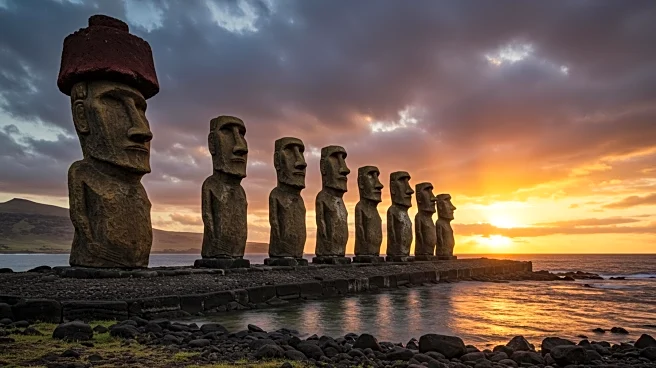What's Happening?
A significant archaeological discovery has been made off the coast of Alexandria, Egypt, where parts of a submerged city dating back over 2,000 years have been found. The ruins, located in Abu Qir bay, may be linked to the ancient city of Canopus, a cultural and religious hub during the Ptolemaic and Roman periods. The site has yielded statues, buildings, and an ancient dock, providing insights into Egypt's ancient civilizations. The Egyptian Ministry of Tourism and Antiquities is preserving these underwater treasures, highlighting the relationship between ancient societies and water.
Why It's Important?
The discovery of the submerged city off Alexandria is crucial for understanding ancient Egyptian civilization and its interaction with the environment. It offers insights into urban planning, religious practices, and maritime activities of the time. The preservation of these ruins is vital for cultural heritage and tourism, contributing to Egypt's economy. The find also serves as a reminder of the impact of natural disasters, such as earthquakes and rising sea levels, on ancient cities, paralleling modern challenges faced by coastal cities like Alexandria due to climate change.
What's Next?
Egypt plans to continue the careful retrieval of artefacts from the site, balancing preservation with public display. The discovery may lead to further archaeological exploration and research, enhancing understanding of ancient Egyptian history. The findings could influence climate change discussions, emphasizing the need for action to protect modern coastal cities from similar threats. International collaboration in archaeology and climate science may be fostered, promoting cultural exchange and scientific advancement.
Beyond the Headlines
The submerged ruins highlight the ethical considerations in archaeology, balancing preservation with public access. The discovery raises questions about the long-term impact of climate change on cultural heritage sites. It underscores the importance of sustainable practices in archaeology and tourism, ensuring the protection of historical sites for future generations. The parallels between ancient and modern challenges emphasize the need for interdisciplinary approaches to address environmental and cultural preservation.


